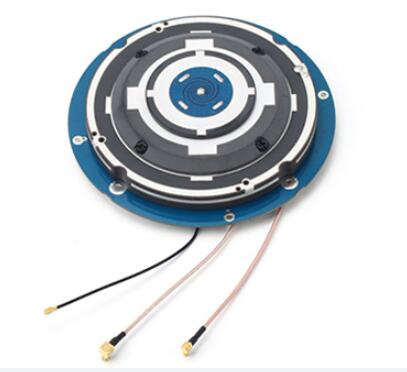Geodetic Antennas vs. GNSS Antennas: Which One Suits Your Surveying Needs Best?
Understanding the Differences: Why This Comparison Matters
As precision positioning technologies evolve, professionals across industries face a common dilemma: choosing between geodetic antennas and GNSS antennas. While the terms are sometimes used interchangeably, the distinctions between them can significantly impact the accuracy, efficiency, and cost of your surveying projects. This article breaks down the key differences to help you make an informed decision based on your specific application needs.
Application Focus
Geodetic antennas are primarily designed for high-precision geospatial and scientific applications such as tectonic monitoring, reference stations, and long-term deformation studies. They are optimized to deliver stable and repeatable results under stringent conditions.
In contrast, GNSS antennas are commonly used in a broader range of commercial applications—such as construction site surveying, GIS data collection, and navigation systems. While many GNSS antennas support multi-constellation reception, not all are engineered to meet geodetic-grade accuracy requirements.
User Group and Industry Adoption
Geodetic antennas are typically used by geodesists, academic researchers, and national mapping agencies that require millimeter-level accuracy over extended observation periods. These users rely on long-term deployment stability and consistent performance over time.
On the other hand, GNSS antennas are favored by field engineers, survey technicians, and construction professionals seeking reliable performance in more dynamic or short-term environments. These antennas offer a balance between precision and ease of deployment.
Performance and Signal Quality
Performance is where geodetic antennas clearly differentiate themselves. They often feature advanced choke ring designs, ground plane structures, and low-noise amplifiers (LNAs) to minimize multipath errors and enhance signal purity. For example, a typical geodetic antenna can maintain phase center variation (PCV) within ±1 mm—critical for post-processing in high-accuracy geodetic networks.
Standard GNSS antennas may not offer such refined control over signal distortion. While many support multi-frequency and multi-GNSS reception (GPS, GLONASS, Galileo, BeiDou), their susceptibility to signal interference can result in centimeter-level rather than millimeter-level accuracy, which is often sufficient for most construction or mapping tasks.
Price and Cost Considerations
The price gap between geodetic and GNSS antennas is significant. Geodetic-grade antennas typically range from $800 to over $3,000, depending on brand and configuration. This investment reflects their premium components and engineering.
In contrast, GNSS antennas vary widely, from entry-level models costing under $100 to more advanced units priced between $300 and $1,000. For many B2B projects, this cost-performance ratio is appealing, especially when ultra-high precision is not essential.
Usage Scenarios
Consider the context of usage: a national GNSS reference station or a scientific observatory demands the consistent accuracy of a geodetic antenna. For example, when monitoring tectonic plate movements or setting up a permanent CORS (Continuously Operating Reference Station), long-term signal integrity is critical.
In contrast, a civil engineering firm conducting a week-long road construction survey may benefit more from the portability and versatility of a GNSS antenna, especially one integrated with RTK (Real-Time Kinematic) capabilities for real-time measurements.
Advantages and Disadvantages
Geodetic Antennas
Advantages: Superior accuracy, long-term stability, excellent multipath rejection, and consistent PCV.
Disadvantages: Higher cost, larger size, and more complex installation requirements.
GNSS Antennas
Advantages: Affordable, lightweight, easy to deploy, compatible with a wide range of receivers.
Disadvantages: Lower accuracy, less robust against signal interference and multipath effects.
Which One Should You Choose?
Ultimately, the right antenna depends on your project’s precision requirements, budget constraints, and deployment conditions. If your business deals with long-term monitoring, geodetic control networks, or scientific research, investing in a geodetic antenna is justified by its performance benefits.
However, if you need reliable positioning for day-to-day surveying, construction layout, or GIS applications, a well-designed GNSS antenna may offer the optimal mix of performance and affordability. Either way, understanding the trade-offs will help ensure your investment supports both current and future operational needs.
Previous: None
Next: HUAWEI Rectifier Module: Unleashing Power Efficiency and Reliability
If you are interested in sending in a Guest Blogger Submission,welcome to write for us!



Comments
0